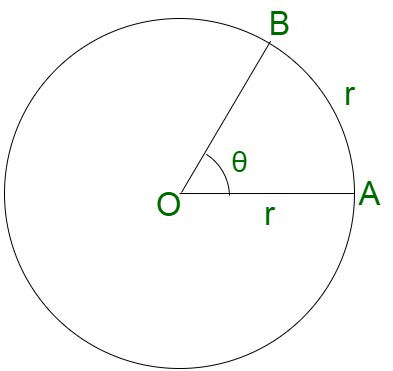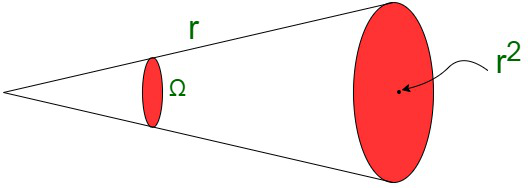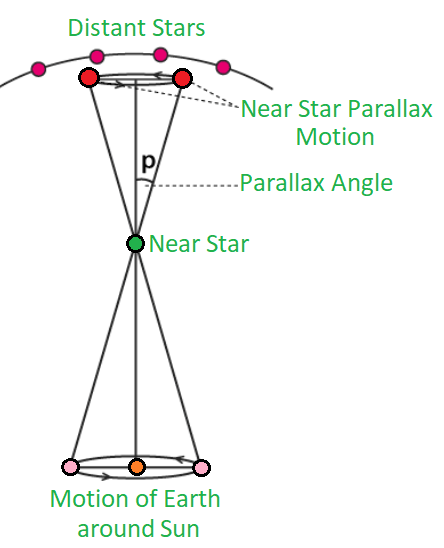Explain Diversity In The Living World (Class 11 – Biology) – Notes.
Measurement forms the fundamental principle to various other branches of science, that is, construction and engineering services. Measurement is defined as the action of associating numerical with their possible physical quantities and phenomena. Measurements find a role in everyday activities to aRead more
Measurement forms the fundamental principle to various other branches of science, that is, construction and engineering services. Measurement is defined as the action of associating numerical with their possible physical quantities and phenomena. Measurements find a role in everyday activities to a large extent. Therefore, it is necessary to study and explore the associated elements along with their theoretical foundations, conditions as well as limitations. It defines the units to be chosen for the measurement of various commodities. It also caters to the comparison of plausible units with the ones already existing of a similar kind.
Measurement defined the new standards as well as form transductions for the quantities which do not have any possible access for direct comparison. These physical quantities can be converted into analogous measurement signals.
Measurements may be made by unaided human senses, generally termed as estimates. It can also be estimated by the use of instruments, which may range in complexity from simple rules for measuring lengths to highly complex analogous systems to handle and design the commodities beyond the capabilities of the senses. Thus, the measurements may range from buying some quantity of milk (in L) or to the highly complex mechanisms, such as radio waves from a distant star or the nuclear bomb radiations. Therefore, we can consider that a measurement, always involves a transfer of energy or interaction between the object and the observer or observing instrument.

Measurement of Height of a person
Unit
The unit of a specified physical quantity can be considered as an arbitrarily chosen standard that can be used to estimate the quantities belonging to similar measurements. The units are well accepted and recognized by the people and well within all guidelines.
A physical quantity is measured in terms of the chosen standards of measurement.
The chosen standard is recognized as the unit of that corresponding physical quantity. A standard unit, in short, is a definite amount of a physical quantity. These standard units can be quickly reproduced to create a wide variety of units and are internationally accepted and accessible.
The measurement of any physical quantity is based on a formula, nu,
where, n = numerical value of the measure of the quantity,
u = unit of the quantity.
Standard
The actual physical embodiment of the unit of a physical quantity is termed as a standard of that physical quantity. The standard is expressed in terms of the numerical value (n) and the unit (μ).
Measurement of physical quantity = Numerical value × Unit
For example: Length of a rod = 12 m. Here 12 is its numerical segment and m (meter) is the unit.
Fundamental Units
Fundamental units are elementary in nature, that is, they can be expressed independently without any dependence on any other physical quantity. This implies that it is not possible to resolve it further in terms of any other physical quantity. It is also termed as a basic physical quantity. Fundamental quantities have their own values and units.
| Fundamental Quantities | Fundamental Units | Symbol |
| Length | meter | m |
| Mass | kilogram | kg |
| Time | second | s |
| Temperature | kelvin | k |
| Electric current | ampere | A |
| Luminous intensity | candela | cd |
| Amount of substance | mole | mol |
Supplementary Fundamental Units
There are two other supplementary fundamental units, namely Radian and steradian are two supplementary which measures plane angle and solid angle respectively.
| Supplementary Fundamental Quantities | Supplementary Unit |
| Plane angle | radian |
| Solid angle | steradian |
- Radian (rad)
One radian is equivalent to an angle subtended at the center of a circle by an arc of length equal to the radius of the circle. It is the unit represented for the plane angle.

θ = 1 radian
- Steradian (sr)
One steradian is equivalent to the solid angle subtended at the center of a sphere by its surface. Its area is equivalent to the square of the radius of the sphere.It is the unit represented for the solid angle. Solid angle in steradian,

Ω = 1 steradian
Properties of Fundamental Units
Any standard unit should have the following two properties:
- Invariability
The standard unit must be invariable. Thus, defining distance between the tip of the middle finger and the elbow as a unit of length is not invariable. - Availability
The standard unit should be easily made available for comparing with other quantities.
The seven fundamental units of S.I. have been defined as under.
- Meter (m)
Defined as 1650763.73 times the wavelength, in vacuum of the orange light emitted in transition from 2p10 to 5d5. - Kilogram (kg)
Defined as the mass of a platinum-iridium cylinder kept at Serves. - Second (s)
Time taken by 9192631770 cycles of the radiation from the hyperfine transition in cesium – 133 when unperturbed by external fields. - Ampere (A)
The constant current which, if maintained in each of two infinitely long, straight, parallel wires of negligible cross-section placed 1 m apart, in vacuum, produces between the wires a force of 2×10-7 newton per meter length of the wires. - Kelvin (K)
Temperature is measured with absolute zero as the zero and the triple point of water as the upper fixed point on the thermodynamic scale. The interval is divided into 273.15 divisions and each division is considered to be unit temperature. - Candela (cd)
The luminous intensity in the perpendicular direction of a surface ofsquare meter of a full radiator at the temperature of freezing platinum under a pressure of 101325 newtons per square meter.
- Mole (mol)
The mole is the amount of any substance which contains as many elementary entities as there are atoms in 0.012 kg of the carbon isotopeC.
Derived units
The derived units are in usage for the commodities where the units are obtained from a combination of fundamental units. Derived units are sometimes assigned names. For instance, the S.I unit of force is kg ms-2 , termed as Newton (N). The unit of power is kg m2 s-3 , termed as watt (W).
Steps to find Derived Units
- Fetch the formula for the quantity whose unit is to be derived.
- Substitute units of all the involved quantities. The chosen units should all belong to one system on units in their fundamental or standard form.
- Simplify for the derived unit of the quantity to compute its final unit.
Example: Compute the unit of velocity.
Since, we know velocity is a derived quantity, obtained from distance and time(fundamental quantities).
Mathematically ,
velocity = displacement/time
S.I. unit of velocity = = m/s
Thus S.I. unit of velocity is m/s.
Some Important derived units
Some of the derived units have been given specific names, depending on the increase in their usage , though they are not recognized in S.I units.
- Micron (mm) = 10-6 m
- Angstrom (Å) = 10-10 m
- Fermi (fm) = 10-15 m
- Barn (b) = 10-28 m2
Systems of Units
Any system of units contains the entire set of both fundamental as well as derived units, for all kinds of physical quantities. The preferred system of units are the following :
- CGS System (Centimeter Gram Second)
The unit of length is centimeter, the unit of mass is gram and the unit of time is second according to the guidelines of this system. - FPS System (Foot Pound Second)
The unit of length is foot, the unit of mass is pound and the unit of time is second according to the guidelines of this system. - MKS System (Meter Kilogram Second)
The unit of length is meter, the unit of mass is kilogram and the unit of time is second according to the guidelines of this system. - SI System
The System Internationale d’ Units, that is S.I system contains seven fundamental units and two supplementary fundamental units.
Note:
While computation of values for any physical quantity, the units for the involved derived quantities are treated as algebraic quantities till the desired units are obtained.
Advantages of S.I Unit System
The S.I unit of measurement is preferred over other units of measurement, because,
- It is internationally accepted.
- It is a metric system.
- It is a rational and coherent unit system,
- Easy conversion between CGS and MKS systems of units.
- Uses decimal system, which is easy to understand and apply.
Other Important Units of Length
The distances can be infinitely larger in magnitude, which cannot be depicted in terms of meters or kilometers. For instance, the distances of planets and stars etc. Therefore, it is necessary to use some larger units of length such as ‘astronomical unit’, ‘light year’, parsec’ etc. while making such calculations, some of which are :
- Astronomical Unit – The average separation between the Earth and the sun.
1 AU = 1.496 x 1011 m. - Light Year – The distance travelled by light in vacuum in one year.
1 light year = 9.46 x 1015 m. - Parsec – The distance at which an arc of length of one astronomical unit subtends an angle of one second at a point.
1 parsec = 3.08 x 1016 m - Fermi – Size of a nucleus is expressed in ‘fermi’.
1 fermi = If = 10-15 m - Angstrom – Size of a tiny atom
1 angstrom = 1A = 10-10 m
Sample Problems
Problem 1. Convert the unit of G, which is gravitational constant, G = 6.67 x 10-11Nm2/kg2 in CGS system.
Solution:
Since, we have
G = 6.67 x 10-11 Nm2/kg2
Converting kg into grams, 1 kg = 1000 gms
= 6.67 x 10-11 x 108 x 103 cm3/g1 s2
= 6.67 x 108 cm3/g1 s2
Problem 2. Name the S.I units of the following commodities :
a. Pressure
b. Solid angle
c. Luminous intensity.
Solution:
a. Pascal
b. Steradian
c. Candela
Problem 3. Derive the S.I unit of latent heat.
Solution:
Latent heat =
Problem 4: How are A0 and A.U related?
Solution:
Describing both quantities in terms of meters,
Ao = 10-10m
and 1 A.U. = 1.4961011m.
Therefore,
1 A.U. = 1.496 x 1011 x 1010 A0
1 A.U = 1.496 x 1021 A0
Problem 5: Describe 1 light-year in meters.
Solution:
See lessA light-year is a distance travelled by light in 1 year with the speed of light :
= 9.46 x 1011 m











Diversity In The Living World Each residing life form will in general share highlights like development, upkeep of homeostasis, propagation, utilization of energy, adaption, and so forth. These highlights help to recognize various species and furthermore prove to be useful in laying out a connectionRead more
Diversity In The Living World
Each residing life form will in general share highlights like development, upkeep of homeostasis, propagation, utilization of energy, adaption, and so forth. These highlights help to recognize various species and furthermore prove to be useful in laying out a connection between organic entities with a typical hereditary part.
Biodiversity: Biodiversity is every one of the various types of life you’ll track down in one region — the range of creatures, plants, growths, and even microorganisms like microbes that make up our normal world. Every one of these animal categories and living beings cooperates in environments, similar to a multifaceted web, to keep up with equilibrium and back life. Biodiversity upholds everything in nature that we want to get by food, clean water, medication, and asylum.
Features of Living World
Diversity in the Living World
The world is overwhelmed by plenty of living organic entities living in the land, water, ice, sweets, and so forth. Each living organic entity is one of a kind of structure, body capabilities, hereditary make-up, etc. The living life forms found in various natural surroundings have different primary organs or capabilities created according to the states of their environment. Organic entities have advanced to adjust to their evolving surroundings. Various sorts and classes of life forms possessing various conditions are known as biodiversity. Districts that are warm and damp have more different organic entities and are called super biodiversity.
People have advanced from primates. However, presently they don’t appear to be comparative in any capacity. Likewise, every individual is not quite the same as the other. Each individual has an alternate skin tone, hair tone, and eyes, and generally significant of everything is hereditary cosmetics. And that implies that the qualities of each and every individual are unique.
In this manner, to recognize better, we have made gatherings of creatures that in some way seem to be comparative and have a few utilitarian and primary similitudes. This is known as order. There are different variables that impact the order of creatures. It is significantly done based on the accompanying models
Classification System
The grouping of life forms is finished by two techniques. One is characterizing them into plants and creatures and the other one which is a five-realm framework is a more nitty-gritty and coordinated characterization of living beings:
Hierarchy of Classification
Carolus Linnaeus additionally organized the organic entities into various scientific classifications at various levels. These scientific classifications in a chronic request are as per the following
Characteristics of Five Kingdoms
Kingdom Monera
These are unicellular prokaryotes. The life forms come up short on the evident nucleus. They might contain a cell wall. They might be heterotrophic or autotrophic in nature. For instance Bacteria, Cyanobacteria.
Kingdom Protista
Protista are unicellular and eukaryotic organic entities go under this group. They display an autotrophic or heterotrophic method of nutrition. They show the presence of pseudopodia, cilia, or flagella for headway. For instance one-celled critter, paramecium.
Kingdom Fungi
These are multicellular, eukaryotic organisms. They have a saprophytic method of nourishment which includes chemoheterotrophic extracellular processing. The cell wall in these organic entities is comprised of chitin. They live in a cooperative relationship with blue-green growth. For instance Yeast, Aspergillus
Kingdom Plantae
These are multicellular, eukaryotic organisms. The cell mass of these creatures is comprised of cellulose. They are heterotrophs and set up their own food through photosynthesis. Kingdom Plantae is partitioned into Thallophyta, Bryophyta, Pteridophyta, Gymnosperms, and Angiosperms. For instance Pines, plants, palm trees, mango trees, and so on.
Kingdom Animalia
Kingdom Animalia is multicellular, eukaryotic living beings yet they don’t show the presence of cell walls. They are heterotrophs or creatures who can’t set up their own food. Both straightforward and complex life forms are found in this gathering and it’s an extremely general gathering of organisms. The organic entities are hereditarily diverse. They display an organ-framework level of organization. It is partitioned into various phyla like Porifera, Coelenterata, Echinodermata, Chordata, Annelids, and so on. For instance Earthworms, Hydra, and so on.
FAQs on Diversity In The Living World
Question 1: Why are living creatures arranged?
Answer:
Question 2: Why are the order frameworks changing occasionally?
Answer:
Question 3: What various measures could you decide to group individuals that you meet frequently?
Answer:
Question 4: What do we gain from distinguishing proof of people and the populace?
Answer:
Question 5: Given underneath is the logical name of Mango. Recognize the accurately composed name. Mangifera Indica
Answer: